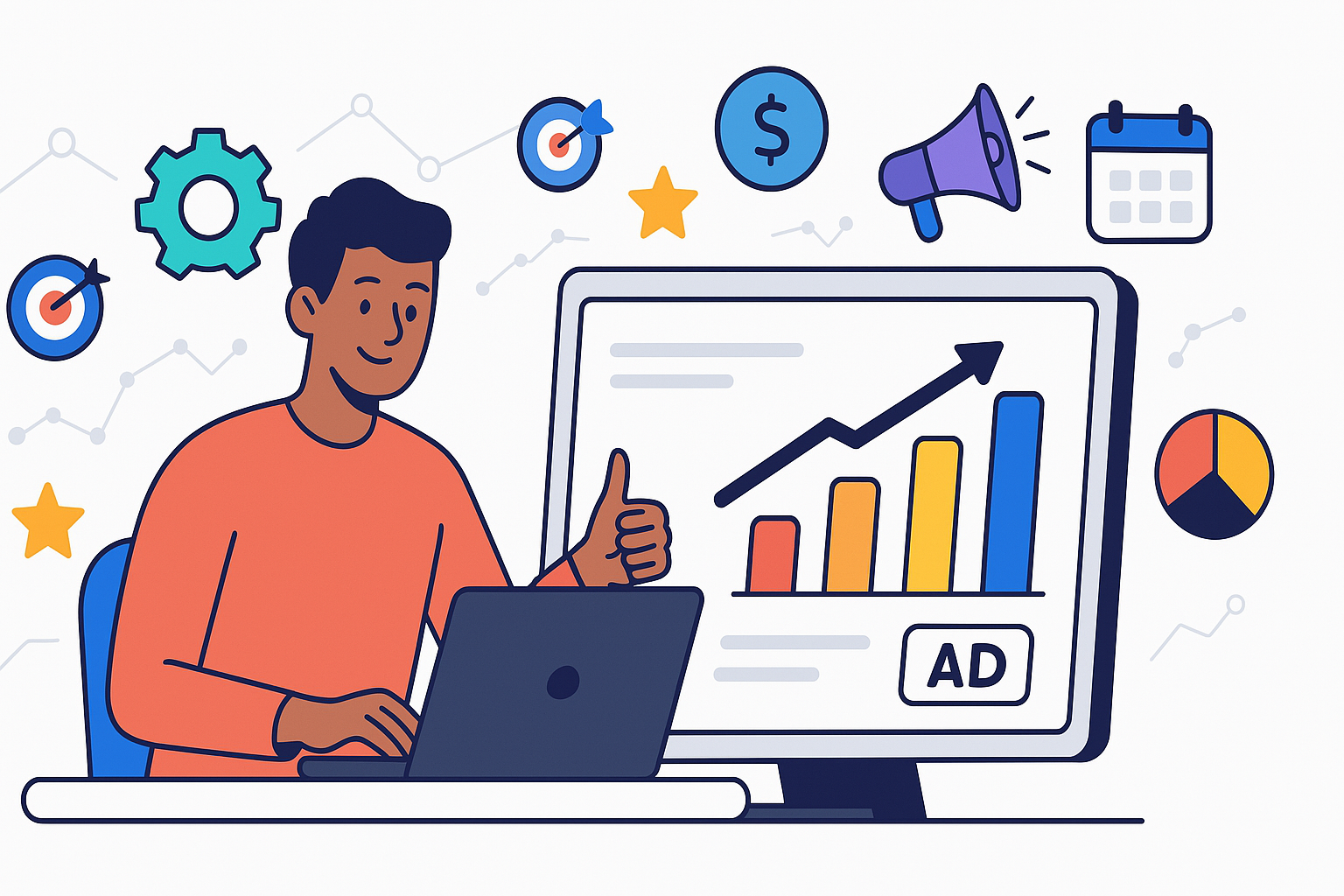What Are Microsoft Ads & How Do They Work?
by Francisco Kraefft on 22 Jan, 2024
Bing Ads, now rebranded as Microsoft Advertising, offers a compelling platform for advertisers looking to diversify their digital marketing efforts. Unlike its giant counterpart, Google, Bing provides unique audience demographics, often resulting in higher conversion rates for specific industries. This section will explore the basics of Bing Ads, highlighting their key features and the potential they hold for businesses aiming to expand their reach.
What are Bing Ads and How Do They Work
At its core, Bing Ads operates on a pay-per-click (PPC) model, similar to other search advertising platforms. Bing PPC advertisements leverage the extensive reach of Microsoft's trio of renowned search engines: Bing, Yahoo, and AOL. Launching a campaign on Bing means your ads simultaneously disseminate across these platforms, tapping into the vast Microsoft network, which garners over five billion searches monthly. This expansive coverage positions Bing PPC as a pivotal asset for any paid advertising strategy.
Functionally, Bing PPC mirrors Google's ad model: advertisers bid on keywords according to their search frequency, your advertisement appears in search results for those keywords, and costs are incurred only when a user clicks on your ad. Bing permits ad texts up to 90 characters, similar to Google, and offers support tools designed to aid in the creation of an efficient keyword strategy, ensuring your advertising budget is spent judiciously on visible ads.
Additionally, Bing enables precise targeting adjustments to control ad distribution, such as device-specific visibility or platform-exclusive appearances, enhancing campaign precision and performance.
Bing PPC offers a strategic advantage; it's a less saturated market compared to Google AdWords, coupled with a user base that exhibits 36% higher online shopping activity than users of other search engines. While Google Ads remains a dominant force, Bing's unique benefits present compelling reasons for small to medium enterprises to consider it a valuable complement to their advertising efforts.
Check out why Bing Ads might be an excellent opportunity to boost sales.
A massive advantage of launching Bing is the ability to import your campaigns from other ad platforms such as Google Ads, Meta Ads, or Pinterest Ads. This helps us to launch our profitable campaigns into this market quickly.
Crafting Effective Bing Ad Campaigns
The success of a Bing Ads campaign hinges on more than just selecting the right keywords; it's also about crafting compelling ad copy, choosing appropriate ad extensions, and optimizing for the best possible user experience. Creating effective Bing Ad campaigns is crucial for maximizing your advertising return on investment and engaging your target audience effectively. This section outlines key strategies and tips for crafting Bing Ad campaigns that attract attention and drive conversions.
1. Understand Your Audience
Before launching any campaign, it's essential to have a deep understanding of your target audience. Utilize Bing's audience insights and segmentation tools to identify your potential customers' demographics, interests, and behaviors. Tailor your ad messaging and targeting options to align with their preferences and needs.
2. Select the Right Keywords
Keyword selection is at the heart of a successful Bing Ad campaign. Focus on choosing keywords that are highly relevant to your products or services. Use Bing's keyword planning tools to research and select keywords based on search volume, competition, and cost-per-click (CPC). Consider incorporating a mix of broad, exact, and phrase match types to balance reach and relevance.
3. Craft Compelling Ad Copy
Your ad copy is your audience's first point of contact, so make it count. Write clear, concise, and compelling ad copy that highlights the unique value proposition of your offering. Use a strong call-to-action (CTA) to encourage users to take the next step, whether visiting your website, purchasing, or signing up for a newsletter.
4. Leverage Ad Extensions
Ad extensions enhance your ads by providing additional information and ways for users to interact with your ad. Utilize site link extensions, call extensions, location extensions, and structured snippets to improve your ad's visibility and click-through rate (CTR). These extensions provide more context to your ads and improve your ad's performance by making it more informative and engaging.
5. Test and Refine
Continuous testing and refinement are vital to the success of your Bing Ad campaigns. Experiment with different ad formats, copy variations, and targeting settings to see what works best for your audience. Use Bing's A/B testing features to compare the performance of different ads and make data-driven decisions to optimize your campaigns.
6. Monitor and Adjust
Regularly monitor your campaign performance using Bing's analytics tools. Monitor CTR, conversion rate, and cost per acquisition (CPA) metrics. Be prepared to adjust your bidding strategy, keywords, and ad copy based on performance data to improve your campaign's ROI continually.
8. Implement Universal Event Tracking (UET)
Universal Event Tracking (UET) is a powerful tool provided by Bing Ads that allows advertisers to track the behavior of users on their website after clicking on an ad. By implementing a UET tag across your website, you can gather valuable data on how users interact with your site, including which pages they visit, how long they stay, and what actions they take.
UET is essential for understanding the effectiveness of your Bing Ad campaigns beyond just clicks and impressions. It enables you to track conversions, from completed sales to sign-ups or any other vital actions you define as a goal. With this data, you can better understand your return on investment (ROI) and make informed decisions about optimizing your campaigns.
Here's how the UET tag helps to enhance your Bing Ad campaigns:
-
Conversion Tracking: By setting up conversion goals in Bing Ads, you can use the data from UET to see how well your ads are driving the desired actions on your website. This insight lets you adjust your ad strategy to focus on the highest-performing ads and keywords.
-
Remarketing: UET data can create remarketing lists, enabling you to target ads to users who have previously visited your website but did not convert. This is a powerful way to re-engage potential customers with personalized ads based on their interests and site interactions.
-
Audience Insights: UET provides deep insights into the behavior and preferences of your website visitors. This information can be used to refine your target audience and tailor your ad messaging and offerings to match their needs better.
Incorporating UET into your Bing Ad campaigns is a step towards more data-driven marketing, enabling you to track user engagement, optimize your campaigns for better performance, and ultimately achieve higher conversion rates.
Beyond the Basics: Advanced Bing Ads Segmentation
For those looking to take their Bing Ads efforts to the next level, this section will introduce advanced strategies such as LinkedIn profile targeting (exclusive to Microsoft Advertising) and utilizing the Microsoft Audience Network for expanded reach.
Using LinkedIn's profile data, Bing Ads Manager enables targeting highly specific audiences, offering a unique advantage over platforms like Google. This capability allows us to fine-tune our campaigns based on company names (e.g., Google, Hootsuite, Government of Canada), industries (Healthcare, Manufacturing, etc.), and job functions (education, sales, arts, etc.), making it an indispensable tool for B2B marketing efforts. Especially beneficial for niche sectors aiming to connect with specific professional demographics, this feature simplifies reaching desired clients through targeted advertising. Microsoft Ads' exclusive access to LinkedIn information for targeting distinguishes it from other platforms, offering a strategic edge in tailoring ad campaigns to match precise audience profiles.
The Microsoft Audience Network (MSAN) is an extension of Microsoft Advertising, providing a platform for creating native ads across Microsoft's network, including Microsoft Edge, Outlook, and MSN. These ads are designed to blend seamlessly with the website's design, making them less intrusive and more personalized through artificial intelligence, which customizes ads based on user preferences.
Utilizing these two forms of segmentation allows us to target users that, in other networks, would be way more expensive. This is especially helpful when running omnichannel campaign strategies; we will have cheaper CPC over this network, driving our overall acquisition cost down.
An approach that we have used before when our ROAS is tight on other ad platforms, we add this network to bring fewer sales but a better price, allowing us to bid higher on the networks with tighter ROAS and outrank our competitors as our overall ROAS will remain the same.
Conclusion
Following these steps and continually optimizing your campaigns based on performance data, you can craft effective Bing Ad campaigns that reach your target audience and achieve your marketing goals. Remember, as with any advertising platform, the key to success in Bing Ads lies in understanding your audience, offering them value through your ads, and refining your approach based on insights garnered from campaign performance data.
Contact us for a $500 coupon to kickstart your campaigns.


